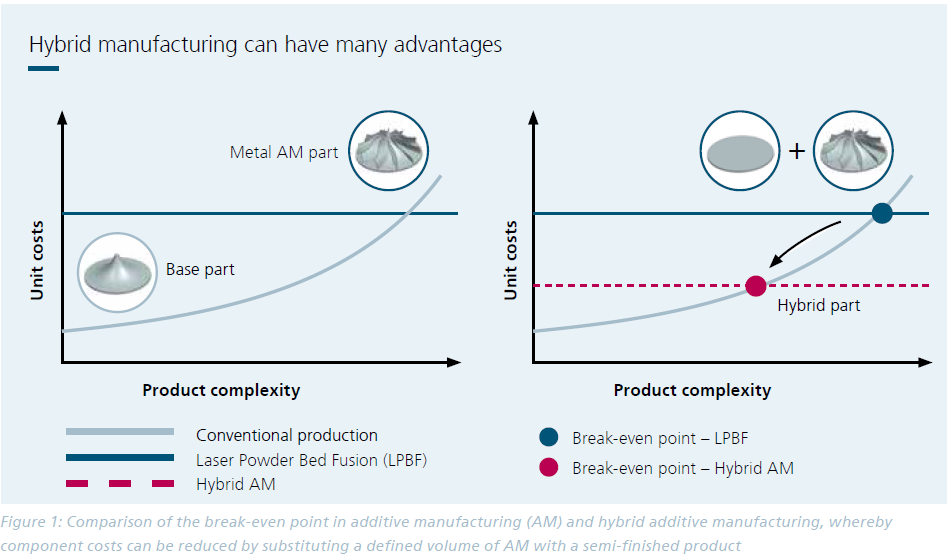The production of 3D-printed components can be limited by various factors. Potential use-cases often stall due to the high costs of 3D printing. However, other factors such as the size of the printing chamber, the complexity and the dimensions of the component can also be limiting factors. One approach to address this problem is to only print sections of the component and join them with conventionally manufactured semi-finished products.
Since printing costs are largely determined by component volume and not by its complexity, costs can be saved as a direct result. The diagram below (Figure 1) demonstrates the potential of this design approach in mitigating the above-mentioned limitations in 3D printing. For conventionally manufactured components, unit costs typically increase with growing geometric complexity. For printed components, an increase in component complexity typically does not lead to an increase in manufacturing costs, which, however, are generally at a higher level. A high potential for saving manufacturing costs for the final component can be achieved if hybrid manufacturing is used in this way to produce a final component from both simple geometric semi-finished parts and geometrically complex printed structures.

